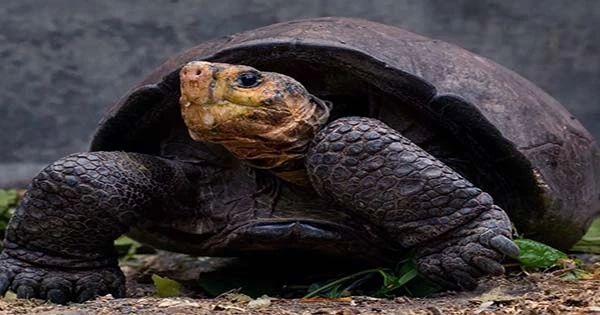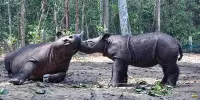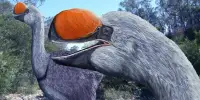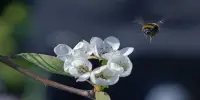Chelonoidis phantasticus, the sole known member of the enormous Galapagos tortoise species, was discovered 113 years apart. A lone male was discovered wandering about Fernandina Island in 1906, but it was the last scientific sighting of the species until 2019, when researchers discovered a second lone ranger: a 50-year-old female dubbed Fernanda who looks to be queen of her own island. The finding increases the number of known C. phantasticus individuals from one to two, but evolutionary scientists are confused since, while their genomes were found to be quite similar (the male currently sits in the California Academy of Science), they appear to be very different.
Fernanda’s shell was smaller and smoother than the male’s, which had a carapace that protruded like a saddleback tortoises. The Galapagos giant tortoise Chelonoidis phantasticus is not extinct, according to Fernanda’s finding, which was published in Communications Biology with the satisfyingly brief title.
At a press release, principal author Adalgisa Caccone, a senior research scientist and lecturer in Yale’s Department of Ecology and Evolutionary Biology, said, “The discovery of one alive specimen brings hope and also throws up new concerns since many riddles remain.” “Can additional tortoises be brought back into captivity on Fernandina to start a breeding program?” Tortoises colonized Fernandina in a variety of ways. And how do they compare to the other Galapagos giant tortoises in terms of evolution?”
C. phantasticus was supposed to have been extinct as a result of volcanic activity on Fernandina Island, the most isolated of the Galapagos Islands. It was anticipated to be a dreadful home turf for a slow-moving species like C. phantasticus, having undergone roughly 25 volcanic explosions in the previous 200 years and with limited area for foraging or escape, yet Fernanda has been living it up on the island for half a century. “The island is one of the newest in the Galapagos archipelago, and it’s still highly active in terms of volcanic eruptions,” Caccone told IFLScience.
“This has resulted in the continual creation of fresh lava fields that are extremely difficult to traverse. Even for people, adequate exploration is challenging, but for tortoises, isolated sections of acceptable habitats have been developed, preventing them from moving from one location to another.” Despite their identical genomes, the researchers discovered a few changes in mitochondrial DNA (often known as the genetic code for “the cell’s powerhouse”), which is inherited from the mother. It’s possible that some of them characteristics are due to Fernanda being a hybrid of two Galapagos tortoise species, such as a male C. phantasticus and a female C. nigra.
The latter is now extinct and comes from a separate island, but it’s likely she visited Fernandina long enough to breed and leave her mitochondrial DNA for future generations to enjoy (thanks to humans who transported the tortoises about). The authors are keen to figure out who the actual C. phantasticus is and whether Fernanda is a hybrid, but they’ll need additional tortoises to do so. Another cause for their disparities might be the difficult nature of living on Fernandina Island.
“She is a petite woman. She is presently in good condition and is still alive and kicking, but she is a little adult, which is why she morphologically differs from the male specimen at the museum “Caccone explained. “It’s most likely due to slowed growth due to a lack of nourishment. This animal was isolated in an area of vegetation, which hampered her development.”
Despite the upheavals at Fernandina, tortoise scats on the island indicate that there may be more Galapagos giants to be found. As a result, the Galapagos National Park and Galapagos Conservancy are planning a (non-violent) giant tortoise search in the hopes of identifying Fernanda’s relatives and maybe saving the species. Caccone, on the other hand, believes that locating breeding-age people is only half the job. “The conservation concern we have is what we will do with them if we do locate additional animals and start a breeding program?” she explained. “Their house is no longer fit.”
















